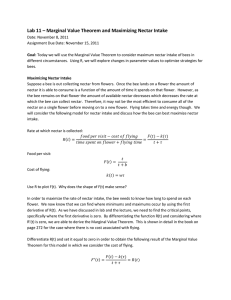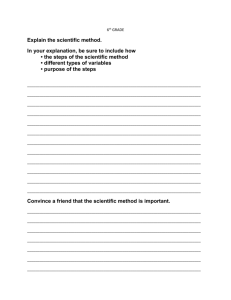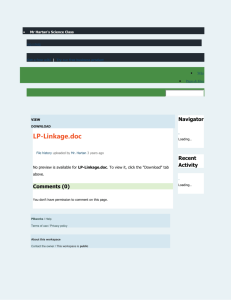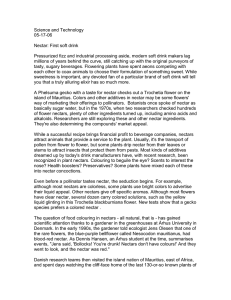Heritability Problem - College of the Holy Cross
advertisement
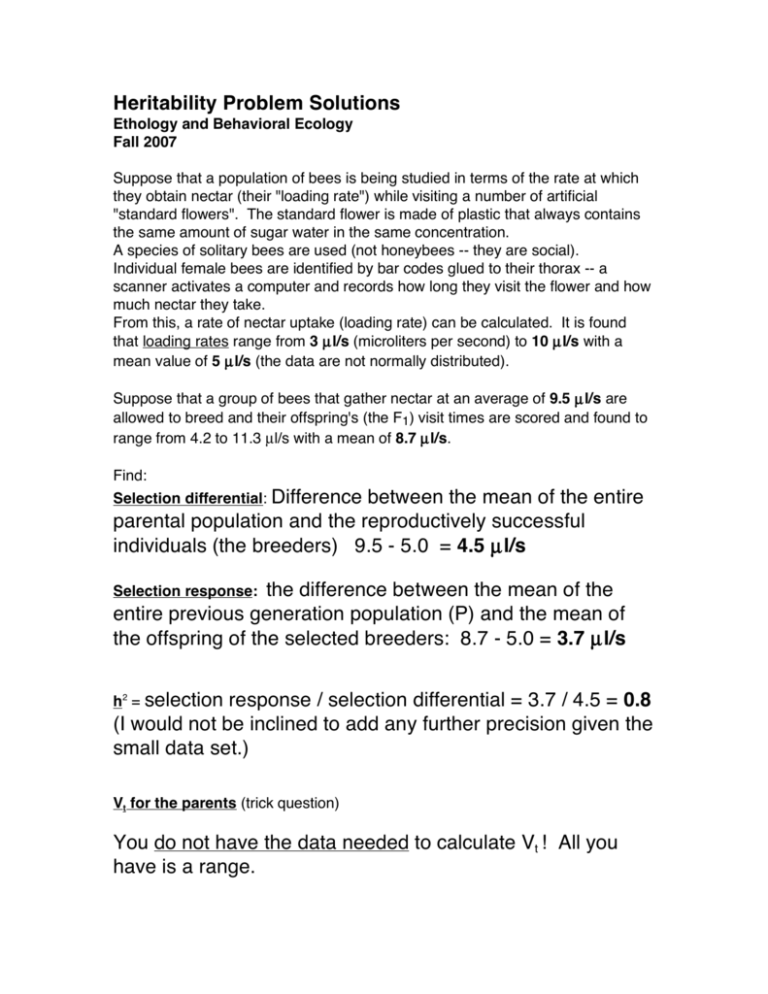
Heritability Problem Solutions Ethology and Behavioral Ecology Fall 2007 Suppose that a population of bees is being studied in terms of the rate at which they obtain nectar (their "loading rate") while visiting a number of artificial "standard flowers". The standard flower is made of plastic that always contains the same amount of sugar water in the same concentration. A species of solitary bees are used (not honeybees -- they are social). Individual female bees are identified by bar codes glued to their thorax -- a scanner activates a computer and records how long they visit the flower and how much nectar they take. From this, a rate of nectar uptake (loading rate) can be calculated. It is found that loading rates range from 3 µl/s (microliters per second) to 10 µl/s with a mean value of 5 µl/s (the data are not normally distributed). Suppose that a group of bees that gather nectar at an average of 9.5 µl/s are allowed to breed and their offspring's (the F1) visit times are scored and found to range from 4.2 to 11.3 µl/s with a mean of 8.7 µl/s. Find: Selection differential: Difference between the mean of the entire parental population and the reproductively successful individuals (the breeders) 9.5 - 5.0 = 4.5 µl/s the difference between the mean of the entire previous generation population (P) and the mean of the offspring of the selected breeders: 8.7 - 5.0 = 3.7 µl/s Selection response: h2 = selection response / selection differential = 3.7 / 4.5 = 0.8 (I would not be inclined to add any further precision given the small data set.) Vt for the parents (trick question) You do not have the data needed to calculate Vt ! All you have is a range. Given the value of h2 you calculated, are you surprised that there was a large range of loading rates in the P and F1? All that the large variation in the P and F1 generations means is that the population is variable. In this case, much of the variation in foraging rates is associated with some sort of genotypic difference (about 70% of the observed variation). This is what h2 of 0.7 means. The h2 score by itself is largely independent of the amount of total phenotypic variance in the population. Would you expect similar loading rates for this population in a different environment? If the loading rates change does that necessarily mean that the heritability has changed? There is absolutely no way to tell. The different environment may make no difference at all to the bees' ability to load nectar. On the other hand, some differences, such as a difference in temperature, might make a huge difference in loading rate. But just because the loading rate changes, it does not mean the h2 will change. For instance, suppose that cooler temperatures meant less nectar per flower and slower pumping rates in the bees but that that all genotypes were equally disadvantaged. The h2 might well be very close to its value at the higher temperature. Note: I use temperature as but one example of an environmental variable that might affect loading rate. Another might be the flower type of degree of filling of the flowers with nectar. Obviously, if those factors are not well controlled, I might expect to get not only different filling rates but also different h2 values!


